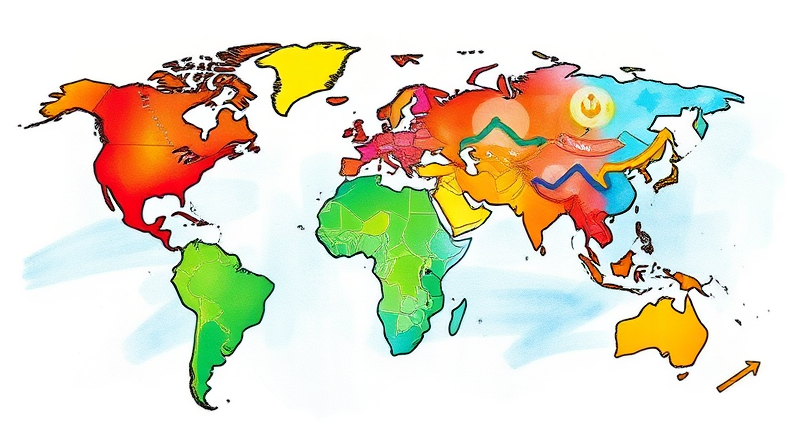In mid-2025, the global cryptocurrency markets stand at a pivotal crossroads. The interplay between innovation and oversight has never been more pronounced, as regulators and industry leaders grapple with digital assets that promise transformative benefits and potent risks. This article examines how diverse legal frameworks are reshaping the dynamics of digital finance and guiding the next wave of institutional and retail adoption.
The Global Regulatory Landscape
Across continents, nations have adopted unique approaches to crypto oversight, reflecting economic ambitions and risk tolerance. Some jurisdictions, like Malta and Switzerland, have embraced digital asset innovation, while others, notably China, maintain strict prohibitions. This mosaic of rules creates both opportunities and challenges for businesses seeking stable ground.
With the approval of Bitcoin and Ethereum spot ETFs in the United States, investor confidence has soared. When major asset managers introduced these products, the market witnessed the fastest-growing ETF in history. Such milestones underscore the significance of regulatory clarity is directly linked to market momentum and institutional entry.
United States: Toward Clarified Oversight
After years of enforcement actions and legal disputes, the 2025 administration has pivoted toward a more coherent framework. The House-passed Financial Innovation and Technology Act—commonly known as FIT21—advocates for primary oversight by the Commodity Futures Trading Commission rather than the SEC. This shift aims to resolve the ongoing disputes between SEC and CFTC that have clouded markets.
- FIT21 establishes clear jurisdictional boundaries and streamlined licensing.
- FINCEN bolsters stringent anti-money laundering checks on exchanges and custodians.
- State-level regulations continue to add layers of complexity for market participants.
Despite progress, fragmented oversight between federal bodies and individual states poses challenges for national firms and end-users alike.
Europe’s MiCA: Setting a Global Standard
The European Union’s Markets in Crypto-Assets Regulation (MiCA) represents the first comprehensive bloc-wide framework. Enforced across member states since early 2025, MiCA covers token issuance, trading platforms, custody services, and stablecoin governance. It mandates transparent disclosures, consumer protection measures, and capital requirements for service providers.
Authorities at ESMA and national regulators now oversee Markets in Crypto-Assets Regulation (MiCA), ensuring uniform application. While transitional uncertainties remain, many view MiCA as a blueprint for future international agreements, fostering both innovation and investor safeguards.
Asia and Emerging Hubs
In Asia, Singapore and Hong Kong have positioned themselves as leading digital asset centers. The Monetary Authority of Singapore (MAS) operates a robust licensing regime that encourages token projects under tight risk controls, whereas the Hong Kong SFC offers a tailored framework for exchanges, custody, and stablecoins. Australia, under AUSTRAC and ASIC, enforces comprehensive AML/CTF rules and contemplates a central bank digital currency sandbox.
Meanwhile, countries in Latin America and Africa explore digital assets as economic levers. El Salvador and the Central African Republic have adopted Bitcoin as legal tender, sparking debates on sovereignty and financial inclusion. These experiments highlight the diverse motivations behind crypto regulation in emerging economies.
Key Regulatory Objectives
Despite regional differences, core objectives unite global policymakers in crafting crypto rules. Most frameworks emphasize:
- Investor Protection and Market Integrity: Preventing fraud, manipulation, and systemic shocks.
- AML/CTF Compliance: Ensuring transparent transaction monitoring and reporting.
- Stablecoin Oversight: Safeguarding payment stability and reserve backing.
- Jurisdictional Clarity: Defining tokens as securities or commodities to avoid legal gray areas.
- Fostering Innovation: Establishing tailored sandboxes and innovation hubs to test new protocols under supervision.
Regional Deep Dive
Challenges and Controversies
As regulations tighten, stakeholders voice concerns about overreach and fragmentation. Excessive or inconsistent requirements risk driving projects offshore, undermining local ecosystems. Surveys indicate that nearly 60% of U.S. citizens still view digital assets as unreliable, often citing unclear rules and potential enforcement arbitrage.
- Fragmented law in the U.S. fuels regulatory uncertainty.
- Overregulation may stifle emerging DeFi and tokenization initiatives.
- Global arbitrage creates uneven consumer protections worldwide.
Striking the optimal balance between protective oversight and creative freedom remains a central debate among policymakers and industry advocates.
Future Outlook: Innovation and Regulation
Looking ahead, several trends will shape the next phase of crypto markets. Central Bank Digital Currencies (CBDCs) are on the horizon, promising government-backed alternatives to private stablecoins. DeFi protocols continue to push boundaries, demanding fresh regulatory thinking around composability and risk exposure. Meanwhile, expected U.S. approvals for additional spot ETFs—covering assets like Solana and XRP—could further legitimize digital finance.
Emerging cross-border regulatory pacts may harmonize approaches, reducing the need for businesses to navigate fragmented legal landscapes. As technologies evolve, so too will the frameworks governing them, ideally fostering resilient markets that combine innovation-friendly policies with robust safeguards.
Conclusion
Cryptocurrency regulation in 2025 stands as a testament to both the promise and challenges of digital finance. Jurisdictions worldwide are crafting rules that seek to protect participants, curb illicit activities, and promote technological advancement. While no one-size-fits-all solution exists, the convergence of policies like FIT21 and MiCA signals a move toward global coherence.
For investors, developers, and regulators alike, staying informed and engaged is paramount. By understanding the evolving legal terrain, stakeholders can capitalize on opportunities while contributing to a secure, transparent, and innovative crypto ecosystem for years to come.
References
- https://www.globenewswire.com/news-release/2025/05/07/3076321/0/en/Cryptocurrencies-Strategic-Intelligence-Report-2025-Many-Expect-a-Rally-to-New-All-time-Highs-Driven-by-Regulatory-Institutional-and-Cyclical-Factors.html
- https://osl.com/academy/article/how-global-crypto-regulations-are-evolving-in-2025
- https://www.grantthornton.com/insights/articles/advisory/2025/crypto-policy-outlook
- https://www.kychub.com/blog/cryptocurrency-regulations-around-the-world/
- https://www.investopedia.com/crypto-regulations-for-financial-advisors-8402046
- https://legal.thomsonreuters.com/blog/cryptocurrency-laws/
- https://www.esma.europa.eu/esmas-activities/digital-finance-and-innovation/markets-crypto-assets-regulation-mica










